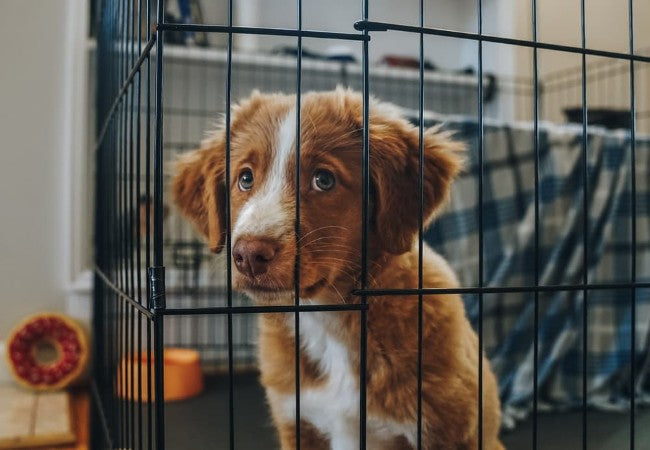Puppy Crying 2025: Vet Guide to Comfort, Training & Well Being 🐶💤

In this article
Puppy Crying 2025: Vet Guide to Comfort, Training & Well Being 🐶💤
By Dr. Duncan Houston BVSc
Is your adorable new puppy crying a lot? Puppy vocalization—from whining to howling—is a normal form of communication during early development. But it can also indicate discomfort, fear, or unmet needs. This comprehensive guide helps you understand why puppies cry, how to respond with empathy and structure, and when to seek veterinary care.
1. 🧠 Puppy Communication: Crying as a Natural Signal
Puppies cry as instinctive signals for attention or care. Neonatal pups vocalize to locate mom, then gradually develop more nuanced signals to communicate needs like hunger, discomfort, or fear.
2. 🍼 Common Reasons Puppies Cry
• Separation & Loneliness
Puppies, especially under 8 weeks, feel anxious when left alone. They’re used to littermates for warmth and safety—so alone time can trigger distress cries.
• Hunger or Need to Eliminate
Crying near meal or potty times often signals hunger or bladder needs. Puppies (<16 weeks) need frequent meals and bathroom trips—roughly every hour of age plus one.
• Pain or Illness
Pain, teething, or early illness can also lead to whines—especially if paired with lethargy, fever, or poor appetite.
• Boredom or Under-Stimulation
Lack of physical or mental activity can drive attention-seeking whining—younger pups especially need enrichment toys and training breaks.
• Fear & Uncertainty
Novel stimuli—creaks, appliances, new people—can trigger fear-based crying during puppy “fear periods” (around 8–12 weeks).
• Crate/Bed Adjustment
Crying during crate training is common as pups adjust to being separated from family or littermates.
3. 🛏️ How to Comfort with Care
- Stay nearby early on: lie beside the crate or use a Snuggle Puppy toy to simulate warmth and heartbeat.
- Gentle touch: soft pats or hand through the bars can soothe pups.
- White noise or lullaby music: background sound can help reduce startling noise responses.
- Feed & potty schedule: consistent timing helps reduce chill and stress-caused crying.
4. 🚫 Train Calm Behavior, Don’t Reinforce Crying
- Ignore attention-seeking whines: don’t reward based on crying—reward calm waiting.
- Distract & redirect: toss a toy, start a gentle game, or reward a calm sit.
- Crate desensitization: feed meals inside, remove door gradually, build separation in small steps.
- Watch for fear cries: provide short, positive exposures to scary things—when needed, ask a trainer or vet behaviorist.
5. 🏋️ Enrichment to Reduce Crying
- Play short training games to tire their mind and body
- Include short daily walks (once vaccinations are complete)
6. 🧰 Supportive Aids
- Ask A Vet App: receive instant vet guidance if concerned
- Crate setup kit: Snuggle Puppy; blanket; crate training guide
7. 🚨 When to Contact the Vet
If crying is accompanied by:
- Lethargy, loss of appetite, vomiting or diarrhea
- Signs of pain (limping, reluctance to move)
- Persistent nighttime whining after two weeks and routine efforts
- Suspected separation anxiety symptoms (destruction, excessive crying)
8. 👶 Life Stage & Breed Considerations
| Stage/Breed | Why It Matters | Strategies |
|---|---|---|
| Neonatal (0–2 wks) | Needs mother contact, feeding support | Warmth, frequent feeding, monitoring health |
| 5–12 wks | High separation sensitivity | Stay nearby at night, crate pacing, gentle routine |
| Fear periods | 8–12 wks, 4–9 mos | Calm exposure, positive experiences |
| Vocal breeds (Husky, Beagle) | Genetic tendency toward whining | Extra training, enrichment & calm reinforcement |
9. 📌 Summary: Calming Crying with Love & Structure
- Identify the need: separation, hunger, discomfort, fear
- Respond with comforting structure, not over-indulgence
- “Don’t reinforce crying” by rewarding calm behavior instead
- Use enrichment, crate training, and love to build confidence
- Turn to vet care if crying signals health or anxiety issues
- Support training and health with Ask A Vet,






